Reduce Swollen Eyes: Causes, Treatment, and More
What causes swollen eyes? How can you treat swollen eyelids? Get the facts about different conditions that lead to puffy eyes and the best ways to reduce swelling.
Understanding the Causes of Swollen Eyes
Swollen eyelids can have a variety of underlying causes, ranging from allergies and fluid retention to more serious infections and medical conditions. Some of the common reasons your eyelid may be swollen include:
- Allergies: Allergic reactions can cause the eyelids to swell, often affecting both eyes.
- Bug bites: Insect bites or stings near the eye can lead to localized swelling.
- Fluid retention: Excess fluid buildup, often due to hormonal changes or underlying health issues, can result in puffy eyelids.
- Pink eye (conjunctivitis): Bacterial, viral, or allergic infections of the eye’s surface can cause swelling, redness, and discharge.
- Chalazion (stye): A blocked oil gland in the eyelid can lead to a tender, swollen bump.
- Periorbital or orbital cellulitis: Skin infections around the eye can cause redness, pain, and swelling.
- Trauma or injury: Physical damage to the eye area can result in swelling, often accompanied by discoloration.
- Lack of sleep: Fatigue can contribute to fluid buildup and puffiness around the eyes.
- Medical conditions: Certain health issues, such as Graves’ disease or eye cancer, can cause swollen eyelids in some cases.
Treating Swollen Eyelids at Home
If your swollen eyelids are caused by non-infectious conditions like allergies or fluid retention, there are several home remedies you can try to find relief:
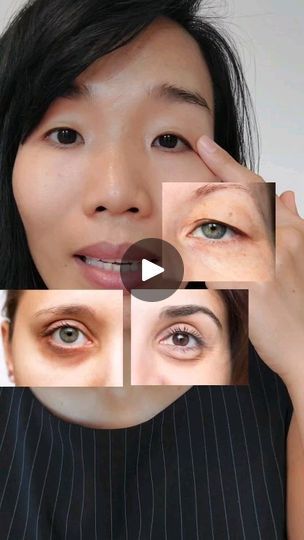
- Use a saline solution: Gently rinse your eyes with a saline solution to help clear away any discharge or crusty buildup.
- Apply a cool compress: Place a cold washcloth or chilled black tea bags over your eyes to help reduce swelling.
- Remove contact lenses: If you wear contacts, take them out to prevent further irritation.
- Elevate your head: Sleeping with your head slightly elevated can help decrease fluid retention and puffiness.
- Try antihistamines: If allergies are the culprit, over-the-counter antihistamines can help alleviate swelling and other allergy symptoms.
Treating Swollen Eyelids Caused by Infection
If your swollen eyelid is accompanied by pain, tenderness, or signs of infection, it’s important to seek medical attention. Conditions like pink eye (conjunctivitis) and chalazion (stye) may require prescription treatment:
Pink Eye (Conjunctivitis)
Pink eye is an inflammation of the eye’s surface caused by a bacterial, viral, or allergic infection. It can start in one eye and spread to the other. Symptoms include visible pus or a sticky coating on the eyelashes and in the corners of the eyes.
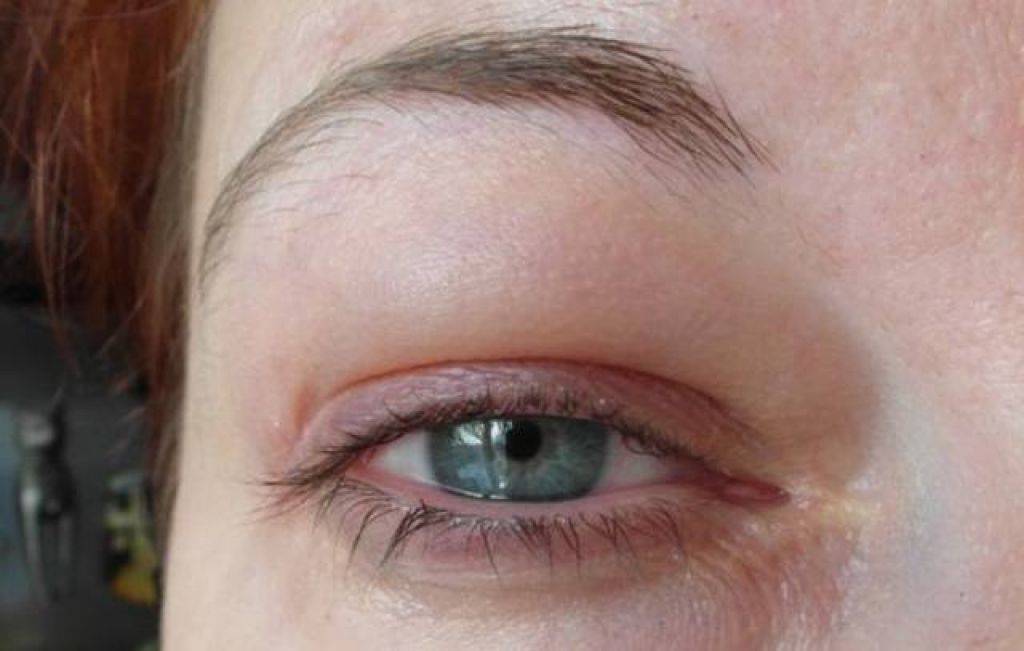
Treatment for pink eye may involve warm water cleaning, avoiding eye cosmetics and contact lenses, and in some cases, prescription eye drops or ointments.
Chalazion (Stye)
A chalazion, or stye, is a tender, swollen bump on the eyelid caused by a blocked oil gland. It may become red and inflamed over time.
To treat a chalazion, use warm compresses several times a day to help unblock the gland and promote drainage. Prescription eye drops or ointments may also be recommended, and in some cases, a doctor may need to perform a minor procedure to drain the blocked gland.
Seeking Medical Treatment for Swollen Eyelids
If your swollen eyelids do not improve within a few days or the swelling is worsening, it’s important to see a healthcare provider. Certain conditions, such as periorbital or orbital cellulitis (skin infections around the eye), may require prompt medical attention and antibiotics.
You should also seek immediate medical care if your swollen eyelids are accompanied by any of the following symptoms:
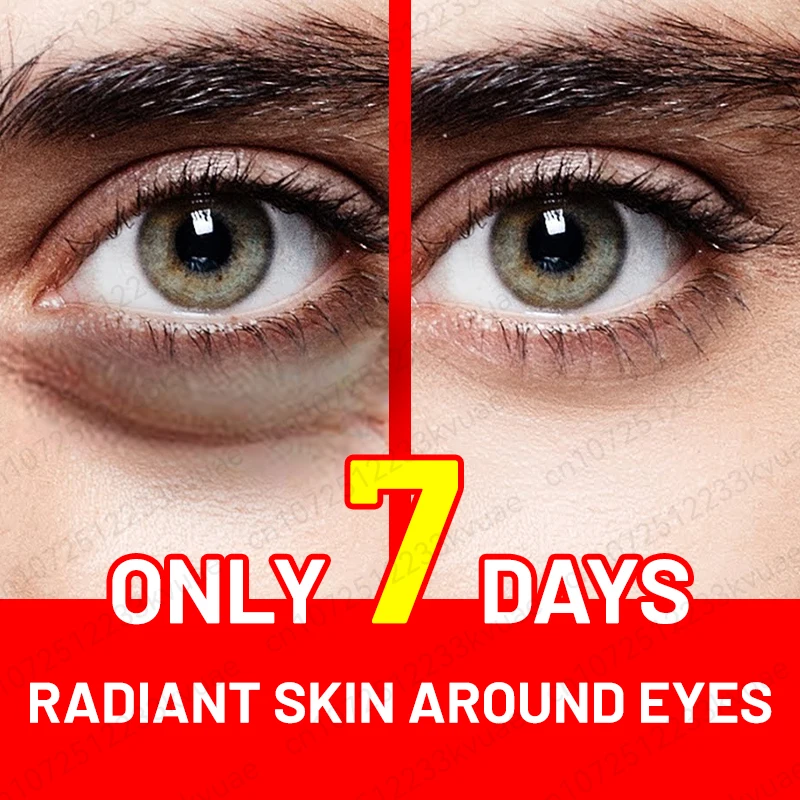
- Pain in the eye
- Blurry or distorted vision
- Vision loss or worsening vision
- Floaters in your vision
- Feeling that something is stuck in your eye
- Inability to move your eye normally
Preventing and Managing Swollen Eyelids
To help prevent and manage swollen eyelids, consider the following tips:
- Avoid touching or rubbing your eyes, which can worsen swelling and spread infections.
- Keep your pillowcases clean and change them regularly if you have eye-related conditions.
- Limit your use of eye makeup and contact lenses if you have an eye infection or irritation.
- Stay indoors as much as possible if your swollen eyelids are due to allergies.
- Wash your face gently before bed if your eyelids are swollen from crying.
Remember, prompt medical attention is important if your swollen eyelids do not improve within a few days or if you experience any concerning symptoms. Your healthcare provider can help determine the underlying cause and recommend the most appropriate treatment plan.
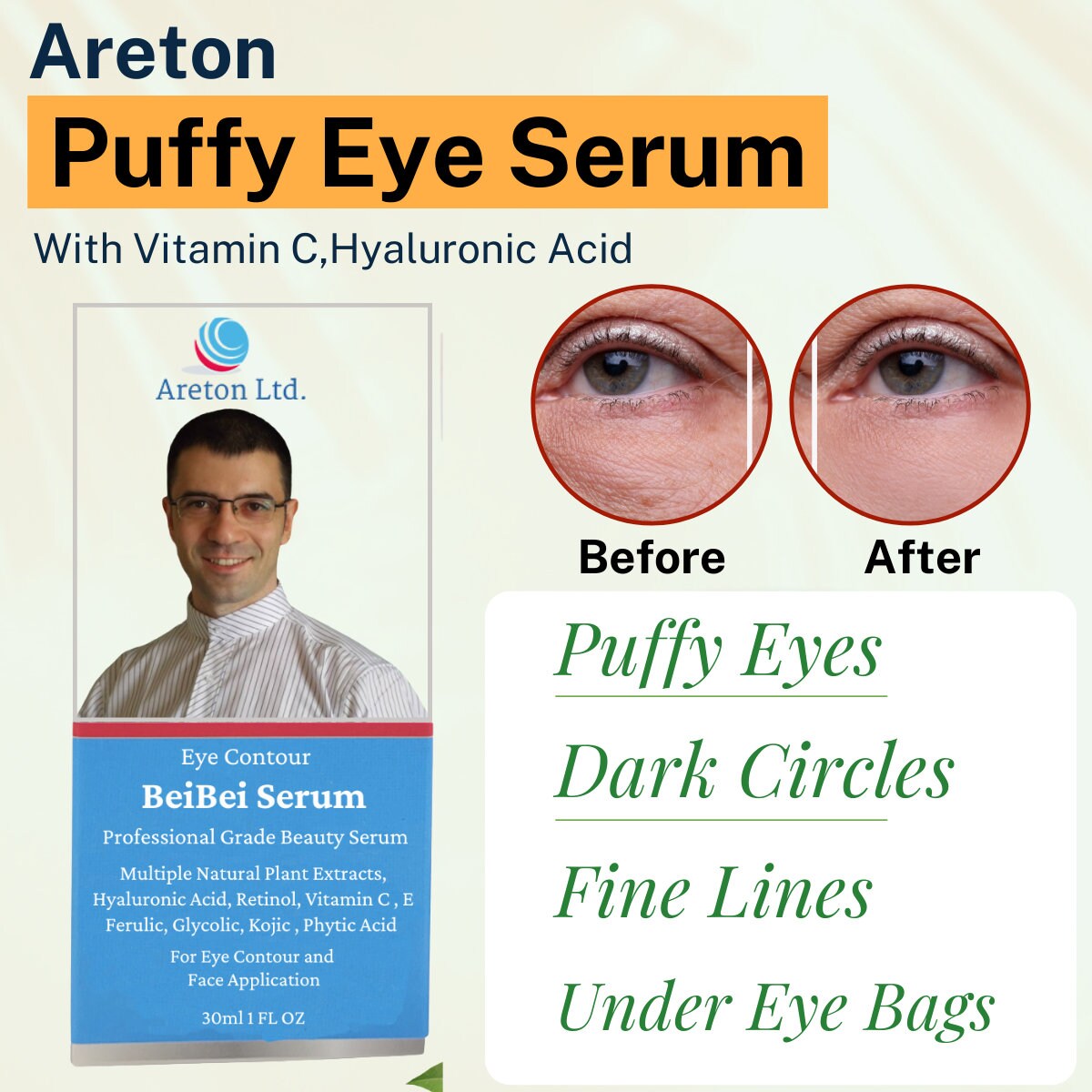
When to Seek Emergency Care
Certain conditions that cause swollen eyelids may require immediate medical attention. You should seek emergency care if your swollen eyelids are accompanied by:
- High fever
- Nausea
- Dizziness
- Shaking
- Confusion
- Changes in vision or double vision
- Inability to move your eye normally
These symptoms may indicate a serious infection or other underlying condition that requires prompt treatment to prevent complications.
Swollen Eyelid: Causes, Treatment, and More
A cool compress or tea bag over your eye may help relieve swelling in your eyelid, while a saline rinse can help clear away crust and discharge. If the swelling doesn’t improve within a few days, a doctor can make a diagnosis and recommend treatment.
A swollen or puffy eyelid is common. In many cases, the swelling goes away within 1 day.
You can reduce the swelling with compresses, but how you treat a swollen eyelid also depends on its cause. Causes can range from fluid retention to a severe infection.
Several reasons your eyelid may be swollen include:
- allergies
- a bug bite
- fluid retention
- pink eye (conjunctivitis)
- a chalazion, which is a blocked oil gland that’s commonly referred to as a stye
- periorbital or orbital cellulitis, which is inflammation that spreads to the skin around your eyes
- trauma or injury, which is often accompanied by discoloration
- lack of sleep
Some medical conditions can also cause symptoms of a swollen eye or eyelid. They include Graves’ disease and — in rare cases — eye cancer.
They include Graves’ disease and — in rare cases — eye cancer.
To avoid complications, see an eye care professional if the swelling lasts longer than 24 to 48 hours.
You can treat swollen eyelids at home, especially if they’re a result of noninfectious causes such as fluid retention or allergies. If those are possible causes, then swelling will often occur in both eyes.
Tips for at-home relief
- Use a saline solution to rinse your eyes if there’s discharge.
- Use a cool compress over your eyes. This can simply be a cold washcloth.
- Remove contact lenses, if you have them.
- Place chilled black tea bags over your eyes. Caffeine helps reduce swelling.
- Elevate your head at night to decrease fluid retention.
- Try antihistamines if you have allergies.
Was this helpful?
If your puffy eyes are due to allergies, you can use antihistamine eye drops. For severe allergic reactions, you may need prescription eye drops. Oral antihistamines can also help.
Oral antihistamines can also help.
If your eyelids are painful or tender to the touch, the cause is likely an infection or chalazion (stye). It’s important to determine the cause of your swollen eyelid, as treatment options depend on what caused it.
Pink eye (conjunctivitis)
Pink eye is the result of a bacterial, viral, or allergic infection that causes inflammation on the surface of your eye. It can start from one eye and spread to both. Pus or a sticky coating will often appear visible on the eyelashes and in the corners of the eyes.
Treatment
You can clean the sticky and crusty eyelids with warm water and cotton. The eye may get better on its own without treatment, although it may take up to 2 to 3 weeks. During this time, avoid touching your eyes and keep your pillowcases clean.
You’ll also want to stop using eye cosmetics and contact lenses.
Chalazion (stye)
If your upper or lower eyelid is swollen, it could be from a chalazion (stye).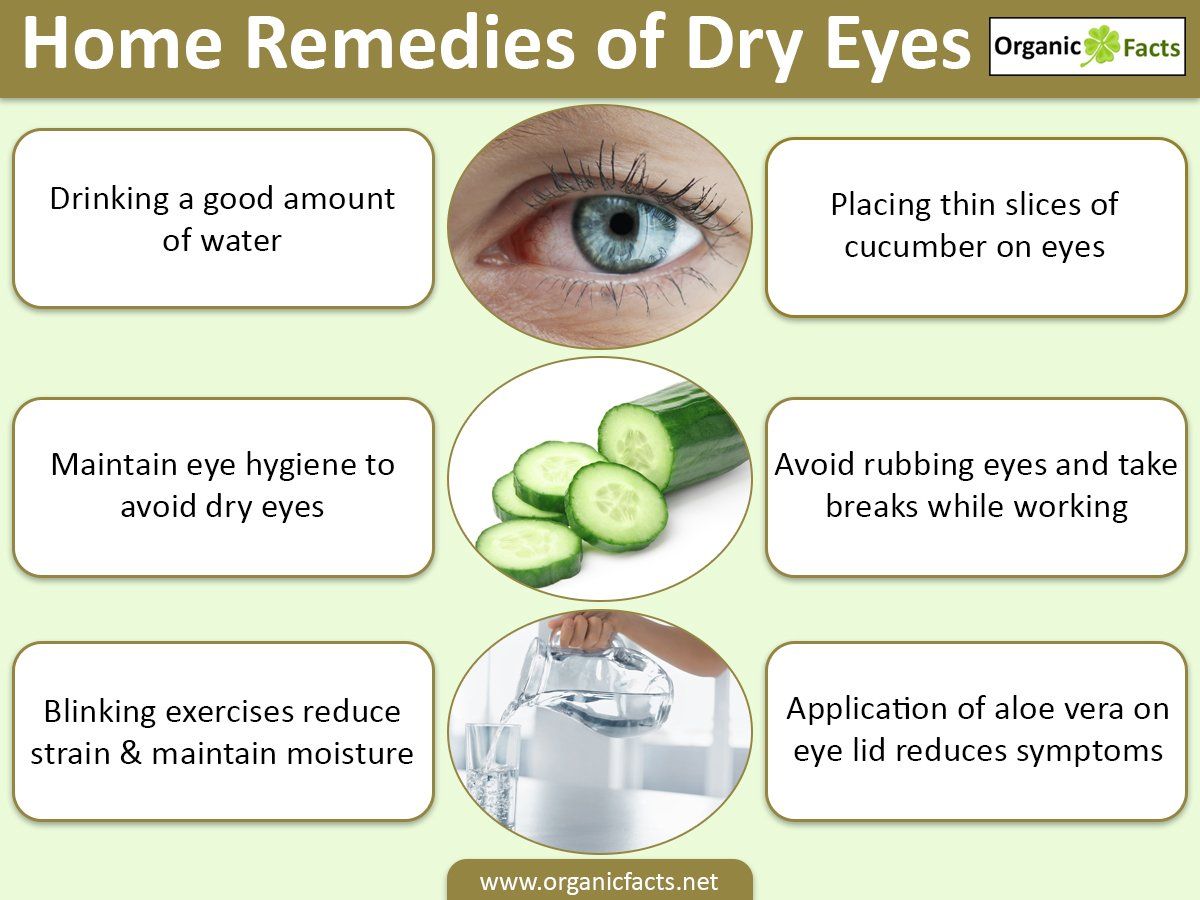 A chalazion typically causes a tender bump in the eyelid with localized swelling around the blocked gland. It may become red or inflamed.
A chalazion typically causes a tender bump in the eyelid with localized swelling around the blocked gland. It may become red or inflamed.
It can take a few weeks to clear, and some develop into a hard bump.
Treatment
You can use a warm compress to bring relief and promote healing. The warmth can help with oil secretion and blockage. You can do this three to five times a day.
On occasion, a doctor may recommend prescription eye drops or ointments. If the chalazion continues to linger, the doctor can perform an in-office procedure to drain it.
Avoid using makeup while you have a chalazion.
What to do if it’s an infection
An infection of the skin is called cellulitis. In periorbital or orbital cellulitis, the skin around your eye will become red and may hurt. You’ll need antibiotics to relieve this swelling.
Cellulitis symptoms that indicate the need for emergency treatment include:
- high temperature
- nausea
- dizziness
- shaking
- confusion
- vision changes or double vision
- inability to move your eye normally
Depending on the cause, swollen eyelids take anywhere from a few days to several weeks to clear up.
Be sure to stay indoors when you can if allergies are the cause. If your swollen eyelids are due to crying, try to wash your face before you go to bed.
Some people prefer to seek medical treatment immediately so they can get an accurate diagnosis and, if necessary, antibiotics. Always see a doctor if your bump or swelling does not start to improve after 1 week or if the swelling is worsening.
Emergency symptoms
See a doctor immediately if your swollen eyelids are accompanied by these symptoms:
- pain in your eye
- blurry or distorted vision
- vision that gets worse
- floaters in your vision
- feeling that something is stuck inside your eye
- inability to move your eye normally
Certain conditions that cause a swollen eyelid require medical attention. Cancers of the eye are rare, but they may cause the eye to push forward, making it seem like the eyelid is swollen when it‘s actually pressure from the cancer.
Other symptoms to watch out for
Only a doctor can diagnose what’s causing your eyelid to swell. However, it may help if you can note:
However, it may help if you can note:
- any difference between the symptoms that came before and the symptoms that came after the swelling
- when pain is present and when pain is absent
- whether you have an identifiable lump versus general swelling
- vision changes, especially double vision
Swollen Eyelid: Causes, Treatment, and More
A cool compress or tea bag over your eye may help relieve swelling in your eyelid, while a saline rinse can help clear away crust and discharge. If the swelling doesn’t improve within a few days, a doctor can make a diagnosis and recommend treatment.
A swollen or puffy eyelid is common. In many cases, the swelling goes away within 1 day.
You can reduce the swelling with compresses, but how you treat a swollen eyelid also depends on its cause. Causes can range from fluid retention to a severe infection.
Several reasons your eyelid may be swollen include:
- allergies
- a bug bite
- fluid retention
- pink eye (conjunctivitis)
- a chalazion, which is a blocked oil gland that’s commonly referred to as a stye
- periorbital or orbital cellulitis, which is inflammation that spreads to the skin around your eyes
- trauma or injury, which is often accompanied by discoloration
- lack of sleep
Some medical conditions can also cause symptoms of a swollen eye or eyelid. They include Graves’ disease and — in rare cases — eye cancer.
They include Graves’ disease and — in rare cases — eye cancer.
To avoid complications, see an eye care professional if the swelling lasts longer than 24 to 48 hours.
You can treat swollen eyelids at home, especially if they’re a result of noninfectious causes such as fluid retention or allergies. If those are possible causes, then swelling will often occur in both eyes.
Tips for at-home relief
- Use a saline solution to rinse your eyes if there’s discharge.
- Use a cool compress over your eyes. This can simply be a cold washcloth.
- Remove contact lenses, if you have them.
- Place chilled black tea bags over your eyes. Caffeine helps reduce swelling.
- Elevate your head at night to decrease fluid retention.
- Try antihistamines if you have allergies.
Was this helpful?
If your puffy eyes are due to allergies, you can use antihistamine eye drops. For severe allergic reactions, you may need prescription eye drops.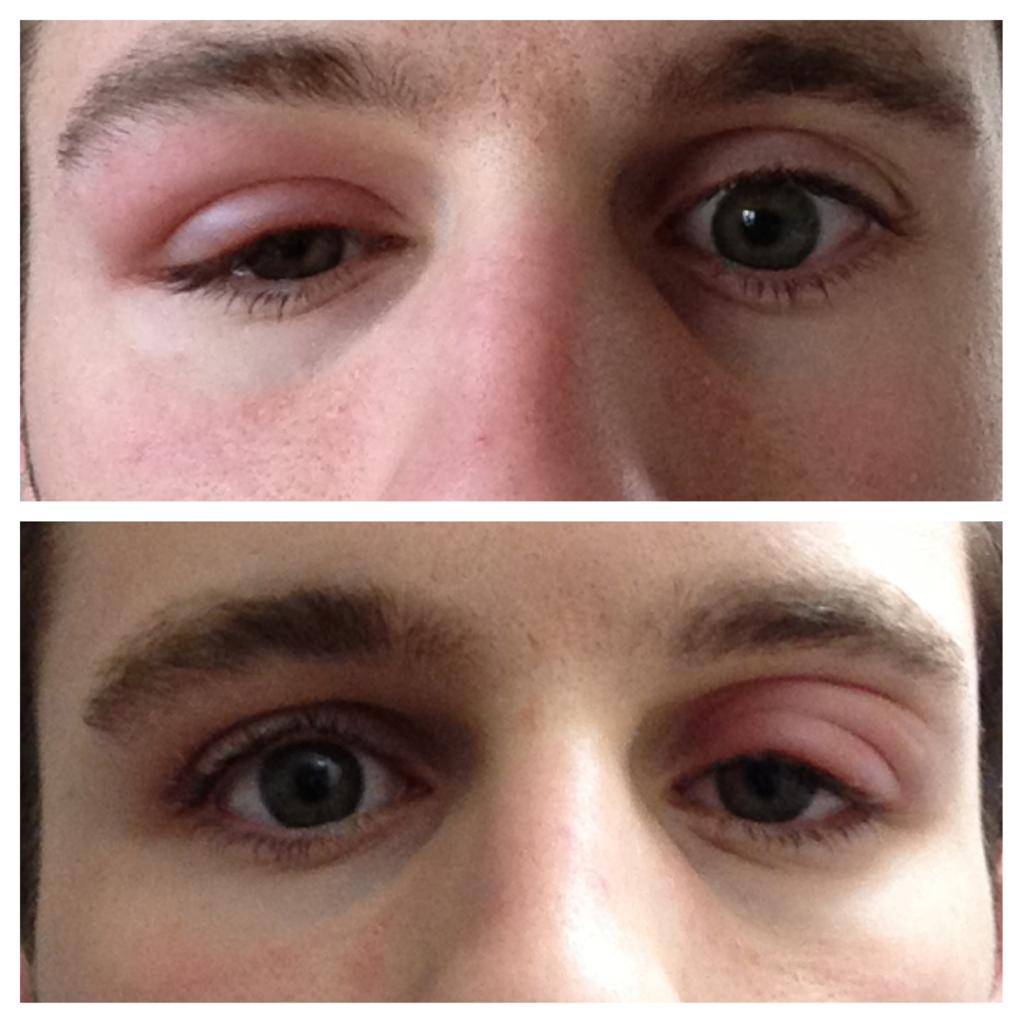 Oral antihistamines can also help.
Oral antihistamines can also help.
If your eyelids are painful or tender to the touch, the cause is likely an infection or chalazion (stye). It’s important to determine the cause of your swollen eyelid, as treatment options depend on what caused it.
Pink eye (conjunctivitis)
Pink eye is the result of a bacterial, viral, or allergic infection that causes inflammation on the surface of your eye. It can start from one eye and spread to both. Pus or a sticky coating will often appear visible on the eyelashes and in the corners of the eyes.
Treatment
You can clean the sticky and crusty eyelids with warm water and cotton. The eye may get better on its own without treatment, although it may take up to 2 to 3 weeks. During this time, avoid touching your eyes and keep your pillowcases clean.
You’ll also want to stop using eye cosmetics and contact lenses.
Chalazion (stye)
If your upper or lower eyelid is swollen, it could be from a chalazion (stye). A chalazion typically causes a tender bump in the eyelid with localized swelling around the blocked gland. It may become red or inflamed.
A chalazion typically causes a tender bump in the eyelid with localized swelling around the blocked gland. It may become red or inflamed.
It can take a few weeks to clear, and some develop into a hard bump.
Treatment
You can use a warm compress to bring relief and promote healing. The warmth can help with oil secretion and blockage. You can do this three to five times a day.
On occasion, a doctor may recommend prescription eye drops or ointments. If the chalazion continues to linger, the doctor can perform an in-office procedure to drain it.
Avoid using makeup while you have a chalazion.
What to do if it’s an infection
An infection of the skin is called cellulitis. In periorbital or orbital cellulitis, the skin around your eye will become red and may hurt. You’ll need antibiotics to relieve this swelling.
Cellulitis symptoms that indicate the need for emergency treatment include:
- high temperature
- nausea
- dizziness
- shaking
- confusion
- vision changes or double vision
- inability to move your eye normally
Depending on the cause, swollen eyelids take anywhere from a few days to several weeks to clear up.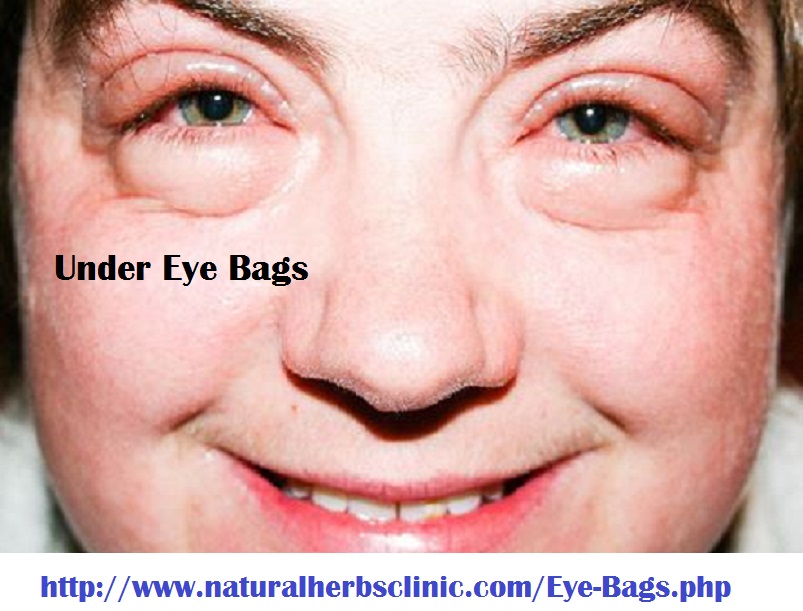
Be sure to stay indoors when you can if allergies are the cause. If your swollen eyelids are due to crying, try to wash your face before you go to bed.
Some people prefer to seek medical treatment immediately so they can get an accurate diagnosis and, if necessary, antibiotics. Always see a doctor if your bump or swelling does not start to improve after 1 week or if the swelling is worsening.
Emergency symptoms
See a doctor immediately if your swollen eyelids are accompanied by these symptoms:
- pain in your eye
- blurry or distorted vision
- vision that gets worse
- floaters in your vision
- feeling that something is stuck inside your eye
- inability to move your eye normally
Certain conditions that cause a swollen eyelid require medical attention. Cancers of the eye are rare, but they may cause the eye to push forward, making it seem like the eyelid is swollen when it‘s actually pressure from the cancer.
Other symptoms to watch out for
Only a doctor can diagnose what’s causing your eyelid to swell.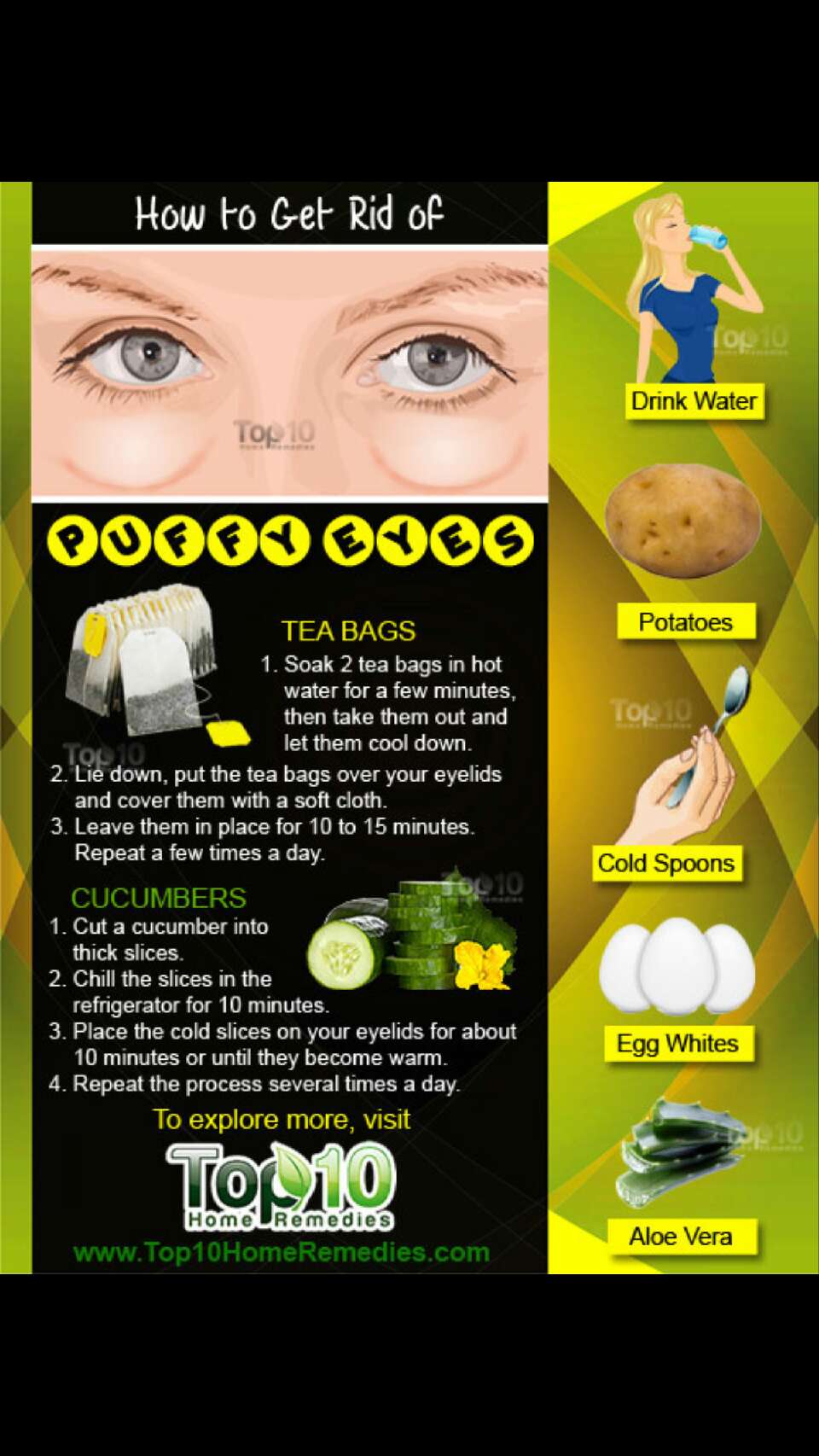 However, it may help if you can note:
However, it may help if you can note:
- any difference between the symptoms that came before and the symptoms that came after the swelling
- when pain is present and when pain is absent
- whether you have an identifiable lump versus general swelling
- vision changes, especially double vision
why tearful eyes swell and how to quickly remove puffiness of the eyelids
Why eyes swell after tears
Tears are a natural emotional reaction to feelings, most often to sadness and pain. The sympathetic nervous system reacts to the release of adrenaline in the following way:
irritation of the lacrimal canals occurs;
increased heart rate;
blood rushes to the face, and it becomes red, and the eyes become swollen (by the way, in the same way, the eyes can react to improper care, to understand what you are doing right and what is not, take our test).
© Getty Images
Pass test
And even if you quickly pull yourself together, get distracted, the “mirror of the soul” will give out feelings for a long time – the redness and swelling will not go away soon. How to quickly remove unpleasant consequences?
How to quickly remove unpleasant consequences?
Back to the table of contents
First aid: what to do if the eyes are swollen after tears
The first thing to do is to open the window and take 10 deep breaths. It will get easier right away! And then wash with cold water. It will help to calm down, remove the feeling that the face is on fire. You can take a couple of ice cubes and wipe your face with them to relieve puffiness and redness.
Back to the Table of Contents
What else will help to quickly fix teary eyes and face? You will need a green corrector (it visually conceals redness), a primer and foundation. A good idea is to draw attention away from the eyes by brightening up the lips. If you have at least half an hour to put yourself in order, remove the patches from the refrigerator or make a compress.
Cosmetics
First aid for teary eyes – patches with caffeine or green tea extract. Soothing masks will also help – with hyaluronic acid, aloe, chamomile, coconut milk. You can try out of turn to use your usual eye cream if it has an anti-puffiness effect. The editors of Skin.ru have compiled their own rating of cosmetics that help put your eyes in order after tears.
You can try out of turn to use your usual eye cream if it has an anti-puffiness effect. The editors of Skin.ru have compiled their own rating of cosmetics that help put your eyes in order after tears.
Skin Naturals Moisturizing + Fresh Look Fabric Eye Patches, Garnier
In “peacetime” these patches successfully fight bags and dark circles under the eyes, but, as personal experience shows, tearful eyes after their application are also quickly restored. The effective formula includes hyaluronic acid and orange juice. Want to get a more noticeable cooling effect? Keep patches in the refrigerator before use. And apply exactly for 15 minutes, as directed on the package.
Skin Naturals Hydration + Youthful Glow Eye Patches, Garnier
The same hyaluronic acid saturates the skin around the eyes with moisture and smoothes it, while green tea extract perfectly tones and protects against aggressive environmental factors (especially if these factors caused tears 😊). Patches are applied for 15 minutes, bags under the eyes are reduced and dark circles under the eyes become less noticeable.
Patches are applied for 15 minutes, bags under the eyes are reduced and dark circles under the eyes become less noticeable.
Hydration + Firm Eye Sheet Mask Skin Naturals, Garnier
These patches are also applied for 15 minutes – you don’t have to lie down, you can walk, run, jump, do household chores. While you are doing all this, the mask works: coconut water and hyaluronic acid, along with other components, moisturize, refresh the skin, remove signs of fatigue and dark circles under the eyes.
Hydraphase HA Concentrated Moisturizing Eye Gel Yeux, La Roche-Posay
Very delicately solves the problem of bags under the eyes and wrinkles in the area around the eyes. The formula with hyaluronic acid, caffeine and thermal water moisturizes and tones the skin around the eyes, it looks less tired.
A.G.E. Eye Complex SkinCeuticals
An excellent tool if you need to quickly clean up and hide traces of fatigue or tears. Cream with proxylan, vitamin C and blueberry extract instantly transforms the skin. If you use it constantly, wrinkles become smaller, dark circles under the eyes are reduced.
Cream with proxylan, vitamin C and blueberry extract instantly transforms the skin. If you use it constantly, wrinkles become smaller, dark circles under the eyes are reduced.
Eye Roller BB Cream Skin Naturals, Garnier
The toning effect is just what you need to quickly hide the signs of stress and also reduce bags under the eyes.
Visionnaire Yeux Eye On Correction, Lancôme
This product seems to be specially designed for Princess Nesmeyana. The balm has a cooling effect, visually reduces dark circles and puffiness under the eyes, fights signs of fatigue.
Men’s Refreshing Eye Gel Stick Facial Fuel Eye De-Puffer, Kiehl’s
Men cry too, and there’s nothing to be ashamed of. Light gel will refresh and cool the skin, visually reduce dark circles and swelling. By the way, there are no contraindications for women either.
Aquasource Total Eye Revitalizer, Biotherm
Instantly cools and hydrates the skin. Wrinkles, dark circles and bags under the eyes become less noticeable.
Wrinkles, dark circles and bags under the eyes become less noticeable.
Compresses
It happens that patches and creams are not at hand. In this case, you can try lotions with available funds.
With milk
It’s very simple: dip two cotton pads (or wipes) in cold milk and apply to closed eyelids for 7-10 minutes. This mask will quickly relieve swelling and redness.
With olive oil and rosemary
You need a teaspoon of oil and a drop of rosemary oil. The mixture should be applied to the eyelids and the area under the eyes, but in such a way that in no case does it get on the mucous membranes. Otherwise, the situation will get worse! After a minute, you need to remove excess oil with a napkin – puffiness is gone!
With potatoes
A small potato should be grated on a fine grater, squeezed out excess liquid and transferred to two gauze bags. Apply them to closed eyelids for 10-15 minutes, and then wash with cool water.
With cucumber
The simplest procedure to save from the effect of tearful eyes is to apply a cool circle on closed eyelids, sit, or better lie down for 10-15 minutes – well, who was crying here?
With tea
Cooled tea bags will help just as well as cucumbers. They, too, just need to be applied to closed eyelids and lie down for 10-15 minutes.
If you don’t have your favorite cream at hand, you can try making lotions from cucumbers. © Getty Images
Massage
Simple eye exercises will also help to get rid of puffiness.
- 1
Lower your eyes down, run your index finger along the eyelashes from the inside of the eyelid to the outside. Then lift your eyes up and repeat the same procedure with the lower eyelid, but move in the opposite direction. You do not need to press, the movements should be light, smooth. Repeat the exercise 10-15 times.
- 2
Massage the upper eyelid and then the lower eyelid along the eyelashes with very light circular motions.
 Move from the inside of the eye to the outside.
Move from the inside of the eye to the outside.
Cream, corrector, gymnastics, compresses – in order to remove swelling from the eyes after tears, all means are good. © Getty Images
Helpful tips: how to avoid a swollen face in the morning after tears
Drink less water, tea, etc. before going to bed: any liquid will contribute to swelling. But the morning must definitely start with a glass of water.
You should not eat salty, smoked and sweet things at night (although there will be a great temptation to seize the problem and sad thoughts with something harmful and tasty). These foods retain water in the body.
Do not rub your eyes. Instead, it is better to rinse your face with cold water, make a compress or mask (see above), apply your favorite eye cream – but only no later than an hour and a half before bedtime.
Back to index
How to quickly remove redness and swelling after tears
Psychology
What are tears? The sympathetic nervous system, which is controlled by the brain, reacts to the release of adrenaline in moments of stress in a special way – it irritates the tear ducts inside the eye and turns us into a crybaby in a matter of moments. When this happens, the heart beats faster, blood flow increases, the face becomes red, and the eyes become swollen. However, even after the heart rate returns to normal, and you gradually calm down, the eyes tend to remain inflamed. And, for quite a long time. How to quickly remove the consequences of overwhelming feelings? Step by step instructions for Princess Nesmeyana.
When this happens, the heart beats faster, blood flow increases, the face becomes red, and the eyes become swollen. However, even after the heart rate returns to normal, and you gradually calm down, the eyes tend to remain inflamed. And, for quite a long time. How to quickly remove the consequences of overwhelming feelings? Step by step instructions for Princess Nesmeyana.
- Wash your face with cold water to soothe and bring down the intense body heat that comes with extreme emotions. Wrap a couple of ice cubes in a thin, soft cotton cloth. Let the ice melt a little and the fabric cool. Close your eyes and apply a compress to the eyelid, and after a few seconds – to the other. Blood vessels will begin to narrow faster, and the inflammation itself will decrease. Repeat three or four times. Then hold the compress under the eyes to reduce the risk of “bags”, as is often the case, the next day.
- Add one drop of rosemary essential oil to a teaspoon of olive oil (to dilute the concentration and prevent irritation of sensitive skin).
 Rosemary contains caffeic acid, which works as an anti-inflammatory agent. Gently apply the mixture on the eyelids and under the eyes. Make sure that it does not get into the eye or mucous membranes. After a minute, remove the excess and wait a few seconds until the remnants of inflammation completely disappear. Well, who here roared sobbing two minutes ago? We have no idea!
Rosemary contains caffeic acid, which works as an anti-inflammatory agent. Gently apply the mixture on the eyelids and under the eyes. Make sure that it does not get into the eye or mucous membranes. After a minute, remove the excess and wait a few seconds until the remnants of inflammation completely disappear. Well, who here roared sobbing two minutes ago? We have no idea!
- Other methods include dipping two cotton pads in cold milk and applying to closed eyelids for about 10 minutes. In addition to swelling, such lotions help fight dark circles. Or dip black tea bags or chamomile tea bags in ice cold water. Then wrap them in a thin cloth and apply to the inflamed area for 15 minutes. It is better to cool two classic circles beforehand and leave them in front of your eyes for 10-15 minutes.
- Massage the area between the eyebrows and the inner corners of the eyes with the pads of your fingers. This gentle drainage will remove excess fluid that builds up when you cry.


 Move from the inside of the eye to the outside.
Move from the inside of the eye to the outside. Rosemary contains caffeic acid, which works as an anti-inflammatory agent. Gently apply the mixture on the eyelids and under the eyes. Make sure that it does not get into the eye or mucous membranes. After a minute, remove the excess and wait a few seconds until the remnants of inflammation completely disappear. Well, who here roared sobbing two minutes ago? We have no idea!
Rosemary contains caffeic acid, which works as an anti-inflammatory agent. Gently apply the mixture on the eyelids and under the eyes. Make sure that it does not get into the eye or mucous membranes. After a minute, remove the excess and wait a few seconds until the remnants of inflammation completely disappear. Well, who here roared sobbing two minutes ago? We have no idea!